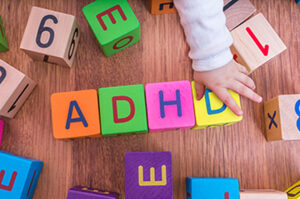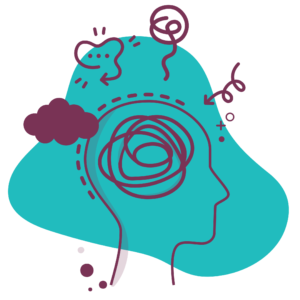Attention Deficit Hyperactivity Disorder (ADHD) is a condition that affects many people around the world. Symptoms of ADHD can include difficulty focusing, hyperactivity, and impulsiveness. While there is no one-size-fits-all approach to treating ADHD, occupational therapy can be an effective way to address some of the symptoms. In this blog post, we will discuss how occupational therapy can help people with ADHD and provide some tips for parents who are looking for help for their children.
Contents
What Is ADHD?
ADHD is a neurodevelopmental disorder that affects both children and adults. Symptoms of ADHD can include difficulty focusing, hyperactivity, and impulsiveness. People with ADHD may have trouble paying attention in school or at work, completing tasks, or controlling their emotions. It is important to note that ADHD is not a behavior problem, and it cannot be cured. Although it is categorized as a “childhood disorder”, symptoms of ADHD can further persist into adulthood.
What Is Occupational Therapy?
Occupational therapy is a type of therapy that helps people develop the skills they need to live independently. Occupational therapists work with people of all ages, from infants to seniors. They can help people with physical, mental, or developmental disabilities. Occupational therapists use a variety of techniques to help their patients improve their skills. These may include using adaptive equipment, providing training in self-care and daily living activities, as well as teaching compensatory strategies.
- Cognitive assessment
- Sensory strategies
- Therapeutic alliances
- Group process
- Participation in activities of daily learning (ADLs)
- Socio-emotional skills
How Does Occupational Therapy Work?

There are many different interventions that occupational therapists can use to help their patients. These may include adaptive equipment, training in self-care and daily living activities, and teaching compensatory strategies.
Adaptive Equipment
Adaptive equipment is any type of device that helps a person with a disability to complete a task. For example, someone who has difficulty gripping a pencil may use an adaptive grip. Or, someone who has trouble buttoning their shirt may use a Velcro closure instead of buttons.
Training In Self-Care And Daily Living Activities
Occupational therapists can provide training in self-care and daily living activities. This type of training can help people with ADHD to develop the skills they need to live independently. Training may include teaching how to cook, how to clean, how to budget, and how to manage time.
Advocacy For Safe Independence
In some cases, people with ADHD may need help advocate for themselves. For example, they may need help communicating with their employer about their symptoms. Or, they may need help finding housing that is accessible and safe.
Physical Wellness
People with ADHD often have difficulty regulating their energy levels. This can lead to problems with sleep, diet, and physical activity. Occupational therapists can help people with ADHD to develop healthy habits and routines. They may also provide information about how to get the recommended amount of exercise.
Provide Strategies For Calmness And Grounding
People with ADHD may benefit from learning calming and grounding techniques. These techniques can help to reduce anxiety and improve focus. Common strategies include deep breathing, progressive muscle relaxation, and mindfulness meditation. processing information, helping individuals feel grounded and calm.
Teaching Compensatory Strategies
Compensatory strategies are techniques that people can use to help them compensate for their symptoms. For example, someone with ADHD may use a planner or calendar to help them stay organized. Or, they may set alarms on their phone to remind them of appointments. These are just a few examples of the many compensatory strategies that occupational therapists can teach their patients.
Finding The Right Occupational Therapist
It is important to find an occupational therapist that is a good fit for you or your child. When looking for an occupational therapist, be sure to ask about their experience treating people with ADHD. You should also ask about the interventions that they use and whether they are evidence-based.
You can also look for therapists online, but make sure to read reviews before making an appointment. Once you have found a few potential therapists, reach out and ask about their experience treating people with ADHD.
There are many different types of occupational therapists. Some specialize in working with children, while others work with adults. There are also occupational therapists that specialize in treating people with specific conditions, such as ADHD. You may want to ask your doctor for a referral to an occupational therapist.
When searching for an occupational therapist, it is important to find one that is experienced in treating ADHD. Once you have found a few potential therapists, be sure to ask about their treatment approach and whether it is a good fit for you or your child.
Occupational therapy can be an effective treatment for ADHD. It can help to improve symptoms and functioning. If you think that occupational therapy may be right for you or your child, be sure to talk to your doctor about getting a referral.
Benefits

Occupational therapy can help people with ADHD in several ways.
- One way is by helping them to develop better organizational skills. Many people with ADHD struggle with organization, which can lead to problems in school or at work.
- Occupational therapists can help people with ADHD learn how to better manage their time, complete tasks, and also control their impulses.
- Occupational therapists can teach strategies for organizing tasks and materials, setting goals, and keeping track of time.
- Therapists can also provide support and guidance to parents who are looking for help for their children.
- Another way that occupational therapy can help is by teaching children and adults how to regulate their emotions. People with ADHD often have difficulty controlling their emotions, which can lead to meltdowns or outbursts. occupational therapists can provide coping strategies for managing emotions, such as deep breathing exercises and relaxation techniques.
- Finally, occupational therapy can also help people with ADHD by providing them with opportunities to move their bodies. Many people with ADHD benefit from physical activity, as it can help to release excess energy and improve focus.
Tips for Parents

If you are a parent of a child with ADHD, there are some things that you can do to help your child get the most out of occupational therapy.
- First, make sure to communicate openly with your child’s occupational therapist. Let them know what your goals are for your child and ask questions about how they plan to help your child reach those goals.
- Second, be involved in your child’s treatment. Occupational therapy is not a “quick fix” for ADHD symptoms, and it requires active participation from both the therapist and the parent.
- Finally, don’t be afraid to ask for help. Parenting a child with ADHD can be challenging, and it is important to reach out to friends, family, and professionals for further support.
There are a few other things parents can do to help their children with ADHD:
- Encourage them to stay active: Exercise can help improve symptoms of ADHD.
- Stick to a routine: Having a set schedule can help children with ADHD stay on track.
- Provide structure: Clear rules and expectations can help children with ADHD know what is expected of them.
- Offer support: Let your child know that you are there for them and offer encouragement.
If you or your child are struggling with ADHD symptoms, occupational therapy may be a good option. Occupational therapy can help people with ADHD in several ways, such as teaching them organizational skills, helping them regulate their emotions, and providing opportunities for physical activity. If you are a parent of a child with ADHD, make sure to communicate openly with your child’s occupational therapist and be involved in your child’s treatment. And don’t forget to ask for help when you need it!
Conclusion
In conclusion, occupational therapy can be a helpful treatment for ADHD. It can improve symptoms and help people with ADHD learn new skills. If you are a parent of a child with ADHD, make sure to communicate with your child’s occupational therapist and be involved in your child’s treatment. And don’t forget to ask for help when you need it!
For more information, please contact MantraCare. ADHD is a neurodevelopmental disorder characterized by difficulty in paying attention, hyperactivity, and impulsivity. If you have any queries regarding Online ADHD Counseling experienced therapists at MantraCare can help: Book a trial ADHD therapy session


